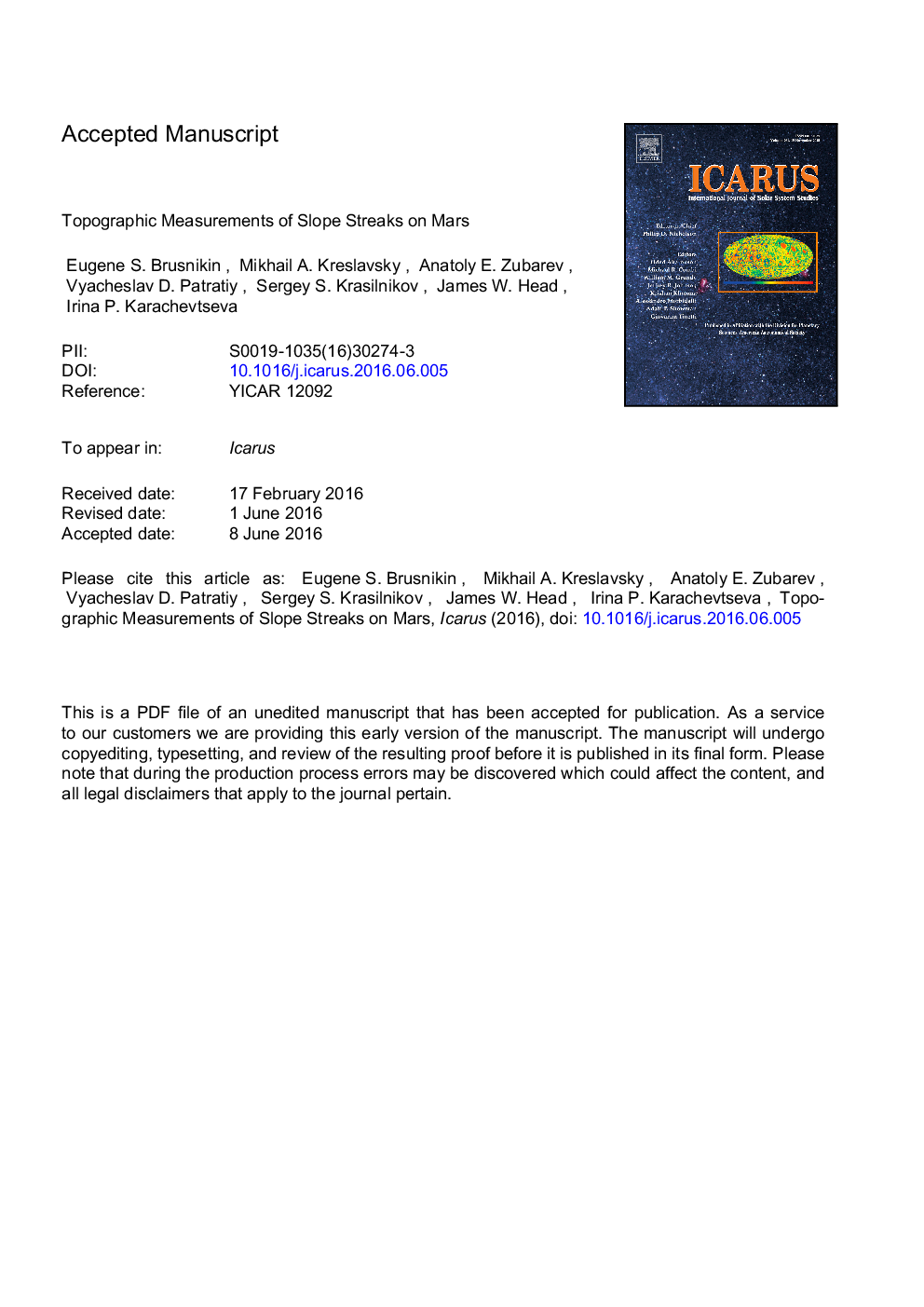| Article ID | Journal | Published Year | Pages | File Type |
|---|---|---|---|---|
| 8134826 | Icarus | 2016 | 27 Pages |
Abstract
Slope streaks are enigmatic, actively forming albedo features occurring on slopes in high-albedo, low-thermal-inertia, dust-rich equatorial regions on Mars. They are a specifically martian phenomenon with no direct analogs on the Earth. Their morphology suggests that the streaks are initiated at their upslope tips and propagate down to their termini; however, the physical mechanism of their formation is uncertain. We performed a large series of measurements of slopes associated with slope streaks using stereo pairs of high-resolution orbital images obtained by HiRISE camera and generated several digital elevation models for selected streaks. We found that: (1) slopes at the upslope streak tips range widely, however, there is a strong indication that streaks can be initiated only on slopes steeper than â¼20°; (2) slopes of the streak termini show an even wider range, with some streaks terminating at slopes as steep as their tips, while others propagate all the way down to horizontal surfaces; (3) the streaks can propagate stably for long (many hundreds of meters) distances and can turn, following the topographic gradient on â¼10°-15° slopes; (4) no uphill propagation of streaks is detected over baselines of tens of meters; (5) the slope streaks often propagate over 1-2 m high obstacles and can climb 1-2 m uphill over short (meters) distances. We used these findings to assess the viability of two classes of hypotheses about slope streak formation mechanisms proposed earlier: 1) “dry”, some kind of run-away avalanche-like dry granular flow, and 2) “wet”, some kind of run-away propagation of a front of percolating brines in the shallow subsurface. No specific observation unambiguously proves or rejects either of the two mechanisms. Several of our findings are readily explained by the “dry” mechanism and cannot be easily explained with any kind of “wet” mechanism, while other findings are closely consistent with the “wet” mechanism and are difficult to reconcile with the “dry” mechanism. This situation might be explained by equifinality (meaning that the streaks, despite their similarity, are formed by different physical processes); alternatively, some modifications to either the “dry” or “wet” mechanisms may be able to provide a coherent explanation; it is also possible that new ideas are needed to understand the processes involved.
Related Topics
Physical Sciences and Engineering
Earth and Planetary Sciences
Space and Planetary Science
Authors
Eugene S. Brusnikin, Mikhail A. Kreslavsky, Anatoly E. Zubarev, Vyacheslav D. Patratiy, Sergey S. Krasilnikov, James W. Head, Irina P. Karachevtseva,
